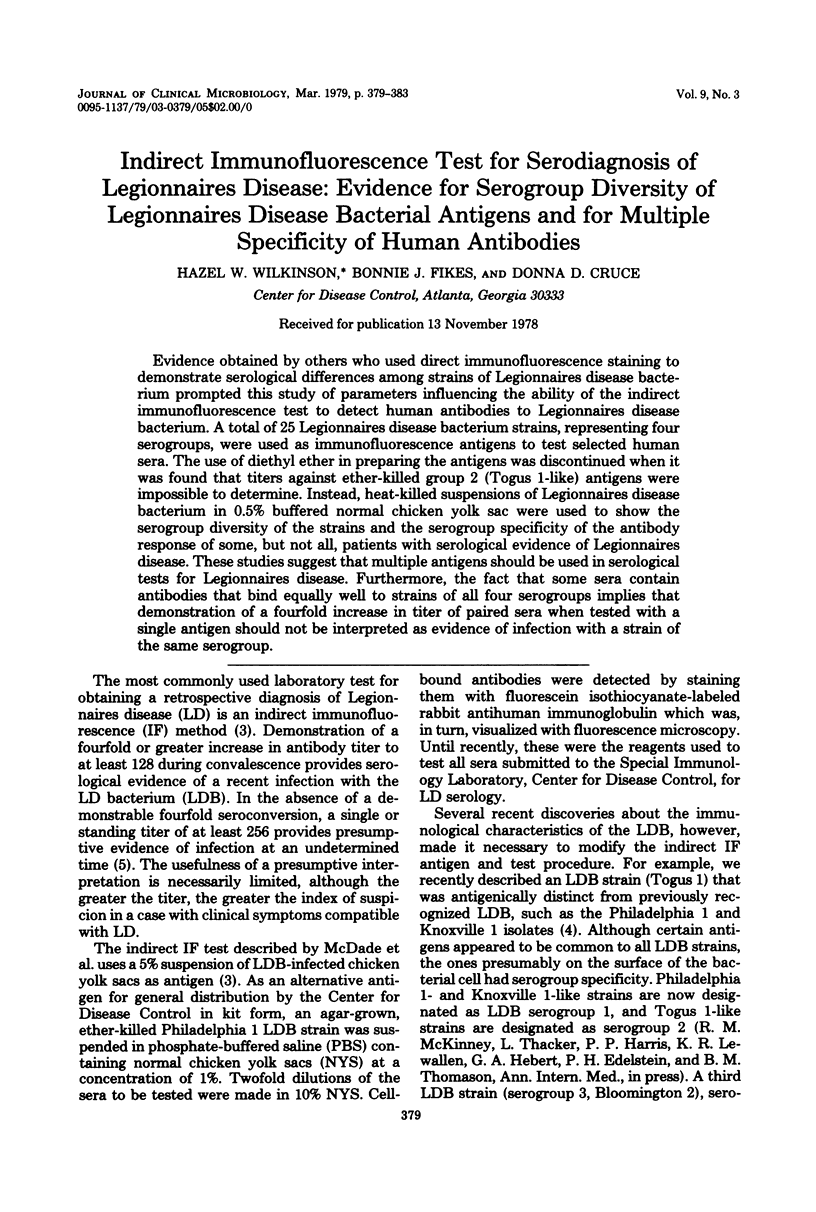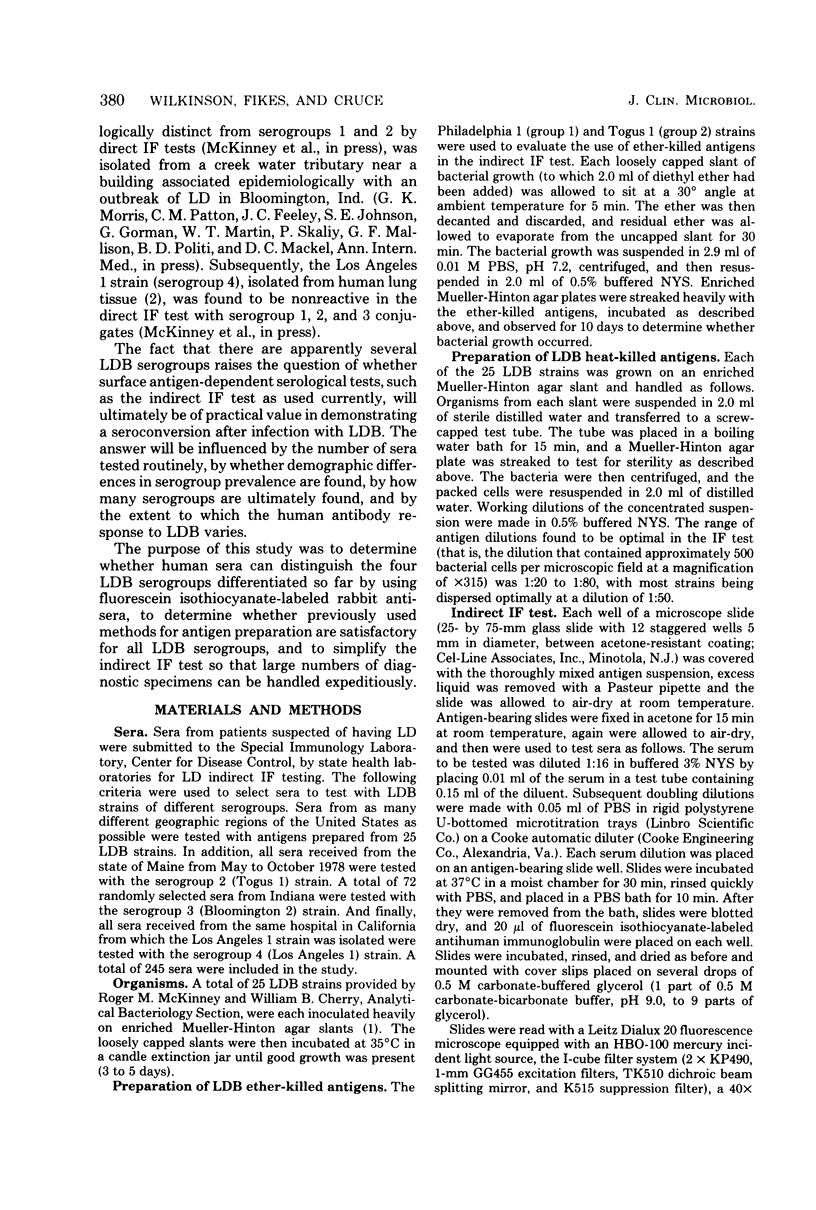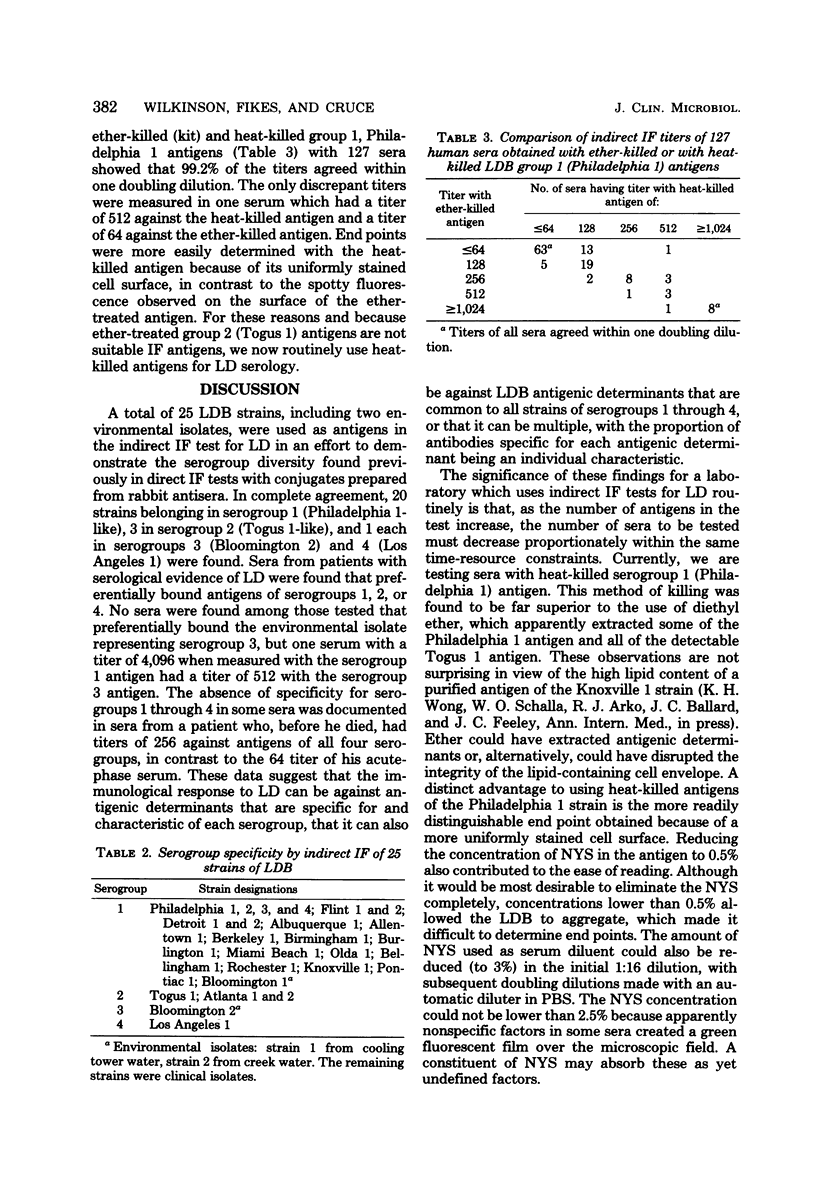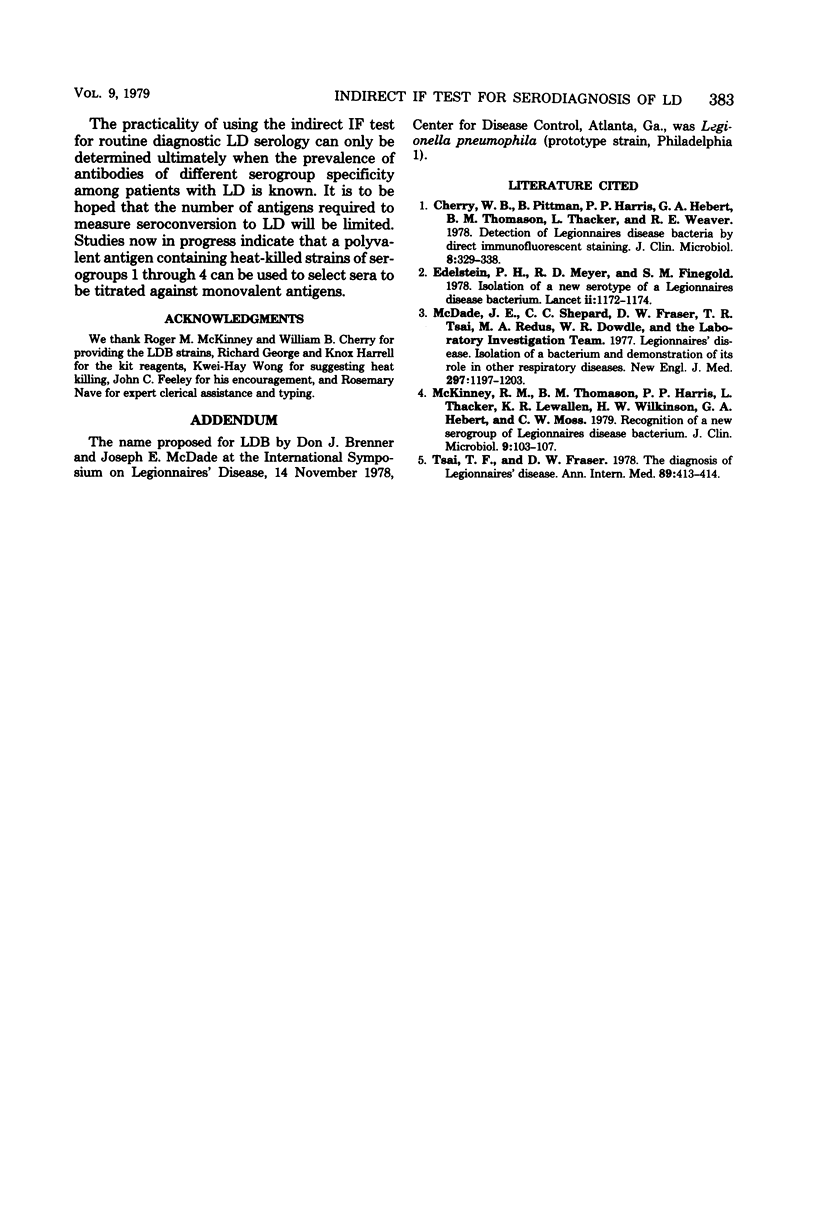Abstract
Evidence obtained by others who used direct immunofluorescence staining to demonstrate serological differences among strains of Legionnaires disease bacterium prompted this study of parameters influencing the ability of the indirect immunofluorescence test to detect human antibodies to Legionnaires disease bacterium. A total of 25 Legionnaires disease bacterium strains, representing four serogroups, were used as immunofluorescence antigens to test selected human sera. The use of diethyl ether in preparing the antigens was discontinued when it was found that titers against ether-killed group 2 (Togus 1-like) antigens were impossible to determine. Instead, heat-killed suspensions of Legionnaires disease bacterium in 0.5% buffered normal chicken yolk sac were used to show the serogroup diversity of the strains and the serogroup specificity of the antibody response of some, but not all, patients with serological evidence of Legionnaires disease. These studies suggest that multiple antigens should be used in serological tests for Legionnaires disease. Furthermore, the fact that some sera contain antibodies that bind equally well to strains of all four serogroups implies that demonstration of a fourfold increase in titer of paired sera when tested with a single antigen should not be interpreted as evidence of infection with a strain of the same serogroup.
Full text
PDF




Selected References
These references are in PubMed. This may not be the complete list of references from this article.
- Cherry W. B., Pittman B., Harris P. P., Hebert G. A., Thomason B. M., Thacker L., Weaver R. E. Detection of Legionnaires disease bacteria by direct immunofluorescent staining. J Clin Microbiol. 1978 Sep;8(3):329–338. doi: 10.1128/jcm.8.3.329-338.1978. [DOI] [PMC free article] [PubMed] [Google Scholar]
- Edelstein P. H., Meyer R. D., Finegold S. M. Isolation of a new serotype of legionnaires' disease bacterium. Lancet. 1978 Dec 2;2(8101):1172–1174. doi: 10.1016/s0140-6736(78)92154-2. [DOI] [PubMed] [Google Scholar]
- McDade J. E., Shepard C. C., Fraser D. W., Tsai T. R., Redus M. A., Dowdle W. R. Legionnaires' disease: isolation of a bacterium and demonstration of its role in other respiratory disease. N Engl J Med. 1977 Dec 1;297(22):1197–1203. doi: 10.1056/NEJM197712012972202. [DOI] [PubMed] [Google Scholar]
- McKinney R. M., Thomason B. M., Harris P. P., Thacker L., Lewallen K. R., Wilkinson H. W., Hebert G. A., Moss C. W. Recognition of a new serogroup of Legionnaires disease bacterium. J Clin Microbiol. 1979 Jan;9(1):103–107. doi: 10.1128/jcm.9.1.103-107.1979. [DOI] [PMC free article] [PubMed] [Google Scholar]
- Tsai T. F., Fraser D. W. The diagnosis of Legionnaires' disease. Ann Intern Med. 1978 Sep;89(3):413–414. doi: 10.7326/0003-4819-89-3-413. [DOI] [PubMed] [Google Scholar]


